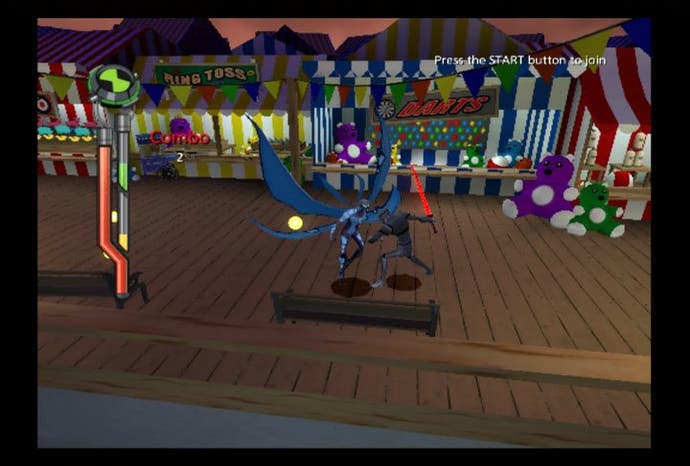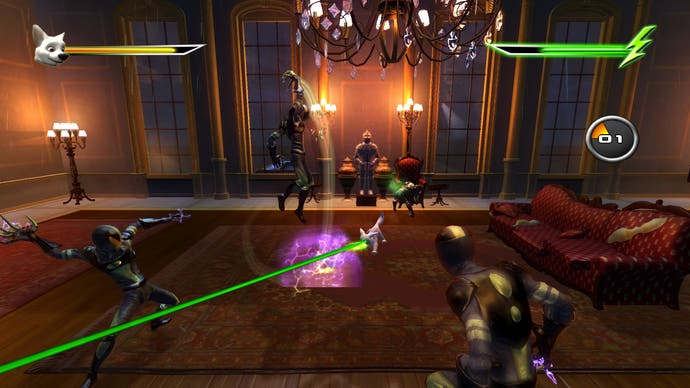Child's Play
The state of gaming for kids.
Once upon a time, the school holidays were heralded by the smell of freshly mown grass, the sound of the ice-cream man and a feeling of time unbound, carefree days that stretched on forever. Today, we know the school holidays are here because there's an influx of aggressively hyped animated movies at the cinema and their accompanying games fighting for attention on the shelf.
It's a shift in perspective rather than reality and ever since my son first voluntarily picked up a joypad at the age of two, I've been fascinated by the way he plays games, the things he responds to in games, and the surprisingly frequent parallels with my own first gaming experiences. I'm old enough to remember being intensely jealous that a friend had a ZX-81, with its chunky monochrome blocks, while my son will probably grow up harbouring similar nostalgic fondness for the innocent days of the Xbox 360, when games were only high-definition and had to be purchased on funny silver discs. The games that tickle our fancy, however, aren't all that different.
Strip away the advances in technology and you'll see that kids are perhaps the purest consumers of videogaming. Far from being some easily-distracted mass of attention-deficit brats, they often have a much more honest and untainted appreciation of what makes games fun. Having reviewed many children's games for Eurogamer over the past few years, I've often felt that the traditional standards applied to games criticism don't always work for this audience. In particular, derided concepts like repetition and linearity are almost always frowned upon these days, yet these are often the very things that make games accessible and fun for younger games.
Rather than falling back on the old roundup format, I'll be using two recently released kids' titles to explore these concepts in a little more detail. Bolt is the adaptation of the new Disney 3D animated movie about a TV star dog who actually believes he's the super-powered hero he plays on-screen. Ben 10 Alien Force is based on the new iteration of the phenomenally popular cartoon series about a young boy who can transform into ten different alien forms thanks to the power of a mysterious device known as the Omnitrix.
The aim, then, is to explore what makes a good children's game, to consider how this oft-maligned market can sometimes reveal bad game design habits that we've been conditioned to tolerate, and to offer a guide to the best games for kids available now by looking at the four design areas that I believe are key to making a successful game for children.
Structure

As with most things pertaining to children, they can be contradictory in their tastes. Nothing inspires them more than the freedom to do whatever they want, but they also crave guidelines and signposts to keep them moving forwards.
Both Bolt and Ben 10 are on familiar territory here, since they're following a fixed narrative. Rather than being based on the story of the movie, the Bolt game takes the form of an episode of the TV show from within the movie. It's a sensible decision, since it means that players get to use the full range of Bolt's special powers - including supersonic barks and laser-beam eyes - but it also means that there's a sense of discovery, rather than ticking off the expected scenes from the cinema. The same is true of Ben 10. The story isn't based on any particular episode of the show, but follows a formulaic tale of linear investigation that allows the player to unlock more of Ben's alien heroes as they go along.
The games are both utterly linear - often frustratingly so for an adult gamer. Invisible walls keep the action moving in one direction, and in Ben 10 it's even impossible to backtrack once you've passed unseen checkpoints. Watching my six-year-old son and his school friends play, however, it seems that these annoyances barely register. They share the game's forwards momentum and so don't mind being herded so blatantly towards the goal. Frustration is a greater buzzkill than boredom for this age group, and it's notable that the moments when their interest dips sharply are when they don't know where to go next. The Ben 10 game has a few moments like this, where progress relies on using a specific alien power on a particular piece of scenery, lingering just out of view, and it's then that the claustrophobic environments become a problem. Endlessly jumping and running around constricted arenas with no clear purpose is no fun, especially at that age.

Bolt and Ben 10 both have serviceable structure, then, but it all seems geared toward finishing the story and nothing more. The games that get the structure absolutely right are those bearing the LEGO brand. I've praised this series many times before for its brilliant balance of exploration and progression, and it's really only when you watch the intended audience playing LEGO Batman, for example, that you see just how incredibly well Traveller's Tales understands the way kids play. The levels are linear, but the overall structure is freeform. Progress in one area aids progress in another. Each new discovery deepens the child's understanding of the gameworld and what they can and can't do in order to succeed.
In other words, while the latest crop of film and TV tie-ins do an adequate job of ensuring kids can make their own progress, and are therefore fine for a weekend's distraction, the games that keep kids coming back months later are those that sweeten their corridors with a little flexibility.








